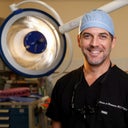Posted underBreast Augmentation q&a
How Long Does It Take to Stop a Seroma From Draining After Surgery for Silicone Implants?
I am 3 weeks postoperatively silicone. After the first week, developed a large seroma and my doctor would not drain. In 15 days drained spontaneously through the scar, and now I have to try to drain help decrease the amount of liquid. How long does it take to stop seroma to drain and heal?
Answers (14)
From board-certified doctors and trusted medical professionals
More Breast Augmentation Questions
See all Breast Augmentation Q&AWE SEND PRETTY
EMAILS
What’s trending? Who’s turning heads? Which TikTok myths need busting? We’ve got you. No fluff, no gatekeeping—just real talk. Get our free, unfiltered newsletter.




